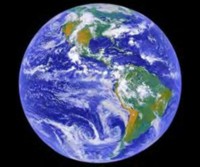Material World: striving for a global 'green economy'
 The extraction, trade and consumption of materials, such as biomass, minerals, metals and fossil fuels, are the main drivers of most global environmental problems, according to a new report. Action must be taken now to achieve the policy target of a global ‘green economy’.
The extraction, trade and consumption of materials, such as biomass, minerals, metals and fossil fuels, are the main drivers of most global environmental problems, according to a new report. Action must be taken now to achieve the policy target of a global ‘green economy’.Over the last 30 years, global extraction of raw materials has increased by 80%. The damage caused to ecosystems has already hit unsustainable levels, with climate change, biodiversity loss, desertification and soil erosion all linked to material overuse.
The new report reveals, for the first time, data on material consumption, trade, consumption and productivity for all countries of the world over three decades, from 1980 to 2008. The biggest increase in consumption occurred in East Asia, rising from 4.7 to 21.1 billion tonnes, which is now twice as high as the United States.
Using future projections of consumption, the report outlines the need for action to reduce material use.
In a ‘business as usual’ scenario, in which all countries in the developing world increase their economic development to equal OECD countries, humans would require around 2.7 times more materials in 2050 than at present (180 compared to 67 billion tonnes). Greenhouse gas emissions from fossil fuels would increase from 30 to 78 billion tonnes and water required for agriculture from 182 to 327 trillion litres.
The alternative to ‘business as usual’ is for all countries to develop highly resource-efficient ‘green economies’, which allow for economic growth while limiting environmental impacts from resource use.
One strategy is to base future development on current ‘best practice’ countries. For example, if all countries follow the examples set by China and Italy for biomass use, Switzerland, Sweden and Iceland for renewable energy, Japan for metal use and the Netherlands and the UK for mineral use, their projected global material use could be just 93 billion tonnes by 2050.
Iron, gold, sand, coal, oil, wood, rice - and many more belong to the natural resources, which build the base of the economic well-being of modern consumer societies. Sustainability concepts use the “ecological rucksack” for measuring the use of these resources as an additional indicator besides the water rucksack, the CO2-emissions and the land use. The “ecological rucksack” is the main actor in this story - a global story about resource use, economic growth and its decoupling.
Moving towards a global green economy requires policy targets to be set for reductions in absolute levels of resource use plus vast improvements in ‘material productivity’, which is the economic value generated per tonne of material used.
But the questions of how to reduce material use, increase material productivity and monitor progress towards a global green economy present major challenges to policymakers.
For example, should a target for global resource use be equally distributed worldwide? If so, at what level? Or should a global target account for inequality of development in different countries? If so, what level of inequality is socially justifiable?
Furthermore, indicators of green growth currently do not account for ‘hidden’ consumption, which is when a country outsources material-intensive production to another country, thus reducing its own resource use but not from a global perspective.
A few highlights from the study:
Fact 1: Global material consumption has doubled within the past 30 years. Mankind is getting more and more dependent on non-renewable materials such as fossil fuels, metals and minerals.
Fact 2: A world out of balance: 18 countries cause more than three quarters of global resource use while the 100 least-consuming countries only cause 1.5 per cent.
Fact 3: An average Austrian consumes 10.2 tons of resources a year while people in most of the other countries consume much less. What would happen from an ecological perspective if all those countries were raised from poverty to average consumption? Without a radical reduction of resource use in the countries that consume most, this is impossible.
Fact 4: Never before in mankind’s history, that many resources have been traded globally.
Fact 5: In the future, Europe will compete increasingly for raw materials - mainly fossil fuels and metals - with other countries.
Fact 6: Europe’s high standard of living is based on raw materials from other continents - including all the negative impacts on those regions.
Fact 7: Across all categories, Europe is the country most dependent on resource imports. Remedies? A shift to sustainable energy and recycling.
While this report provides a valuable overview of global material consumption for policymakers, future research should focus on including hidden material flows in consumption estimates to obtain even more comprehensive indicators of resource use in order to set appropriate targets, say the researchers.
You can return to the main Market News page, or press the Back button on your browser.

